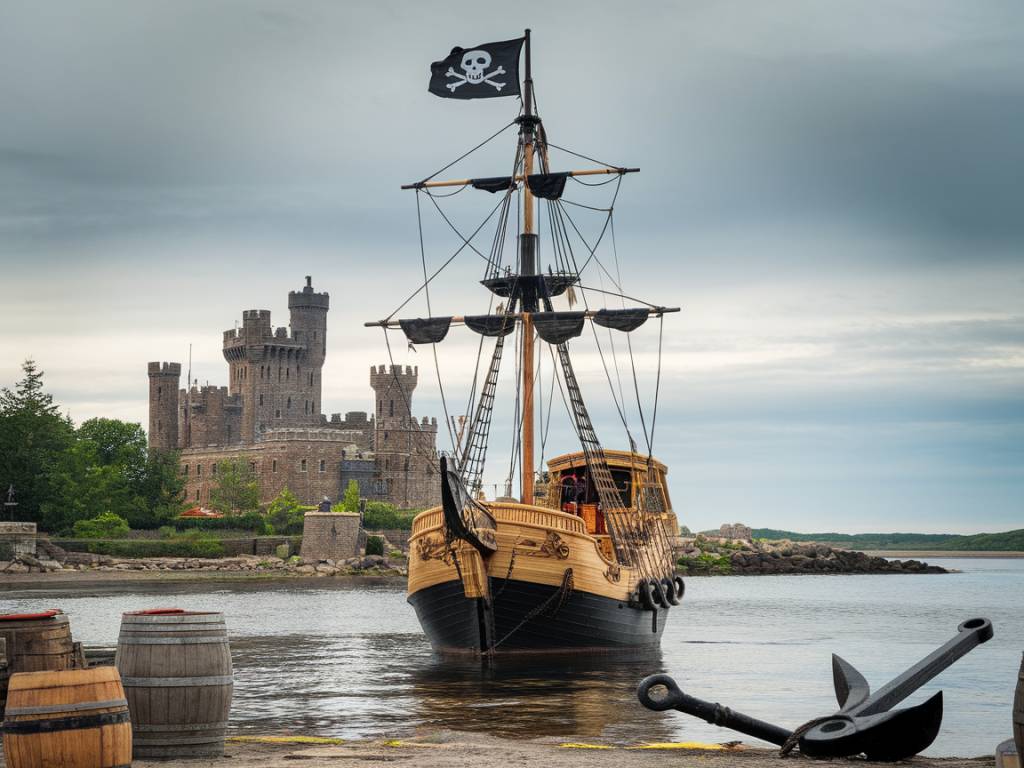The cultural importance of the Red Dragon symbol

The cultural importance of the Red Dragon symbol
The Red Dragon: A Symbol Steeped in Myth and Identity
The Red Dragon, or Y Ddraig Goch in Welsh, is one of the most recognizable symbols of Wales. Whether it’s flying proudly on the Welsh flag, emblazoned on sports jerseys, or featured in souvenir shops, the Red Dragon is a symbol that resonates deeply with Welsh identity and culture. But how did this mythical creature become such a revered national emblem? Let’s journey through history, mythology, and tradition to uncover the cultural importance of the Red Dragon.
Origins in Myth and Legend
The story of the Red Dragon is shrouded in mythology, with its roots tracing back to ancient Welsh lore. One of the most iconic tales featuring the Red Dragon comes from the « Mabinogion, » a collection of medieval Welsh stories that serve as a cornerstone of Celtic mythology. According to legend, the Red Dragon represents the Welsh people, locked in an eternal struggle with a White Dragon, symbolic of invading forces. This battle of the dragons is vividly captured in the story of Lludd and Llefelys, where the dragons’ fight causes turmoil across the land and must be resolved with wisdom and cunning.
The Red Dragon’s symbolic role is further solidified in the prophecy of Merlin, as recounted in Geoffrey of Monmouth’s 12th-century « Historia Regum Britanniae. » In this tale, the Red Dragon’s victory over the White Dragon foretells the triumph of the Britons (the Welsh) over their Anglo-Saxon invaders. This enduring image of the Red Dragon as a defender of Welsh heritage has solidified its place in the nation’s collective imagination.
The Red Dragon and the Welsh Flag
Today, the Red Dragon proudly graces the Welsh flag, officially adopted in its current form in 1959. The flag’s design—a striking red dragon on a green and white background—has become a powerful symbol of Welsh identity. But did you know that the exact origins of this design stretch back centuries?
The use of the Red Dragon as a political and military symbol dates to at least the Roman occupation of Britain, during which Roman legions carried dragon standards into battle. Later, during the reign of King Henry VII, the Red Dragon gained prominence as it was used in his royal badge to emphasize his Welsh lineage and the Tudor family’s claim to the throne of England. The green and white stripes, meanwhile, are said to represent the Tudor colors. Taken together, the flag is a living tapestry of Wales’s historical and cultural legacy.
A Symbol of Resistance and Pride
The power of symbols lies in their ability to unite, inspire, and endure through the ages, and the Red Dragon is no exception. Over the centuries, Wales has faced waves of invasion, political suppression, and cultural challenges. Yet, the Red Dragon has remained a steadfast emblem of perseverance and pride, representing an unbroken connection to the land, its people, and their history.
In modern Wales, the Red Dragon has become a rallying point for national pride, especially during major cultural and sporting events. Whether it’s Rugby fans waving flags at the Principality Stadium or performers at the National Eisteddfod celebrating the richness of Welsh art, the Red Dragon serves as both a reminder of the past and a symbol of hope for the future.
The Red Dragon in Food and Tradition
What does a mythical dragon have to do with food, you ask? Well, even the culinary world of Wales hasn’t escaped the influence of the Red Dragon. For example, a traditional Welsh dish known as « Dragon Sausages » playfully nods to the national emblem. These spicy pork sausages, often flavored with leek (the iconic Welsh vegetable), are a cherished part of local cuisine and a way to celebrate Welsh identity at the dinner table.
During special events like St. David’s Day, you might see creative food presentations featuring the Red Dragon motif. From cakes decorated with bright red icing to pastries shaped like dragons, these culinary tributes highlight how deeply ingrained the Red Dragon is in the cultural fabric of Wales. It’s not just a symbol—it’s a source of inspiration for artistic expression, right down to our plates.
The Red Dragon in Landscapes and Art
Wales’s rugged landscapes and Celtic artistic traditions have long been a canvas for the Red Dragon. Across the country, you’ll find sculptures, murals, and public art installations celebrating this iconic creature. A visit to Cardiff Castle, for example, reveals a striking statue of a Red Dragon perched proudly atop the castle walls—a testament to its enduring significance.
Even in rural Wales, the dragon’s presence can be felt. Whether it’s a carved wooden dragon on the gates of a local village or a community mural celebrating Welsh history, the Red Dragon connects people to their shared heritage. If you’re lucky enough to visit Wales, keep an eye out—you never know where this fiery creature might make its appearance.
Lessons from the Red Dragon
Why does the Red Dragon hold such a special place in Welsh hearts? Perhaps it’s because, like the people of Wales, this mythical creature embodies resilience, strength, and a deep respect for history and heritage. It serves as a reminder that even in the face of adversity, a strong sense of identity and pride can prevail.
So, the next time you see the Welsh flag fluttering in the breeze, pause for a moment to appreciate the rich tapestry of history, myth, and culture that the Red Dragon represents. From ancient legends to contemporary life, it’s far more than just a symbol—it’s the beating heart of Wales itself.





